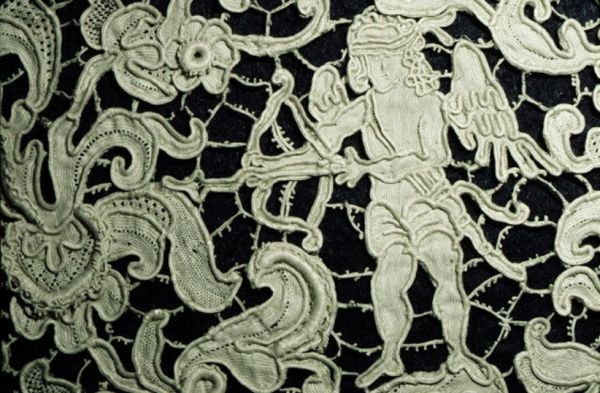
Lace was everywhere in the 17th century. Anyone could make it with time and practice. And that's how lacework illustrated the stratification of social classes. Common people had what they themselves made. As you went up the social ladder, more free time meant more intricate lace, and the aristocracy could afford to have lace custom-made by dedicated artisans, embedded with pearls and gems, with patterns that included mythical beasts, historic scenes, and meaningful personal symbols.
Threads of silk and precious metals were imported from the East, and lace making competitions and guilds were established. It transcended the space of domestic hobby, and became a way to flaunt your status; churches would commission “panel” pieces akin to antique comic books that played out biblical scenes, and it wasn’t uncommon to find lace embellishments on the coffins and chariots – as well as the cuffs – of aristocrats.
The art of lace never died, but it evolved. Read a history of lace and see some impressive examples at Messy Nessy Chic.
(Image credit: Metropolitan Museum of Art)





